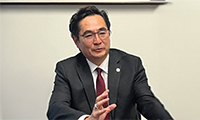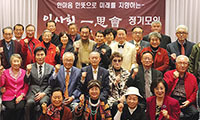A tall, trim man in chinos and a green checked shirt strode quickly past broken car carcasses, Dumpsters and chunks of unidentified metal. In his hand were mallets, and in his eye was a gleam for the right pieces of junk to transform into concert-worthy sounds. He stopped at a small pile of gas tanks, and unleashed a virtuoso solo performance of drumming.
The man, Christopher Lamb, is the principal percussionist of the New York Philharmonic, and on this hot day late last month he joined colleagues from the orchestra and the composer Magnus Lindberg at a junkyard in a search for pieces of metal to play at performances of Mr. Lindberg’s “Kraft.” The work is a giant complicated work for orchestra, amplified solo instruments and percussion ? plenty of percussion. The soloists, including a cellist, a clarinetist and a pianist, are also drafted into playing the percussion instruments, many spread around the hall. Mr. Lindberg requests that orchestra members go to a junkyard in the area of the performance and pick out found instruments.
“It’s part of the tradition of the work,” he said . “It has to have a local sound.” The piece, completed in 1985, has had two dozen performances. Its performers and Mr. Lindberg have visited scrap heaps in places like the Waterloo area of London; St.-Denis, outside Paris; and Porto in Portugal.
“I’ve always been amazed at the number of performances it’s had, given the complexity,” Mr. Lindberg said. Mr. Lindberg, a Finn and the composer in residence at the Philharmonic, said his idea was to inject a layer of mostly dry, metallic sounds into the battery of standard percussion instruments, which have a greater resonance. “This is just to add a spice,” he said, “a strong chili spice, though.”
Mr. Lindberg said that in writing “Kraft” he was inspired by the composers Edgard Varese and Iannis Xenakis; by industrial rock music he heard while living in Berlin; and by the sounds of the city: traffic, demolition and construction.
The use of found percussion instruments is not new. It has a healthy 20thcentury tradition, in the works of Lou Harrison, Henry Cowell and others. Recently a composer in Beacon, New York, Joseph Bertolozzi, created a work consisting of percussive sounds made on a Hudson River bridge.
The sound engineer for the “Kraft” performance, Lou Mannarino, steered the orchestra to the scrap yard, which was loosely organized. Here was a row of disembodied car doors; there, a line of automobiles without front ends . Here was a heap of tires; there, a spread of wheel suspensions.
Mr. Lamb was all business, moving rapidly from heap to heap. Mr. Mannarino held up a spring coil. Mr. Lamb ran his mallet over it, bringing out a melodious clang. “I need four,” he said.
Wielding a rusted bolt, Mr. Lindberg whacked a chunk of metal, which responded dully. “This is a good sound,” he said. The musicians also picked out large cylindrical tanks, about 1.5 meters tall, with valves at the top, to be cut down to different sizes for different pitches.
“I want them for the future,” Mr. Lamb said. After about an hour, the musicians took their places in the cars. An autoparts customer pulled up and asked what was going on. Told that the occupants were musicians, he asked, “What are we singing?” They are from the New York Philharmonic, he was informed. “Oh, great,” he said, and walked away, briskly and without another word.
스마터리빙
more [ 건강]
[ 건강]이제 혈관 건강도 챙기자!
[현대해운]우리 눈에 보이지 않기 때문에 혈관 건강을 챙기는 것은 결코 쉽지 않은데요. 여러분은 혈관 건강을 유지하기 위해 어떤 노력을 하시나요?
 [ 건강]
[ 건강]내 몸이 건강해지는 과일궁합
 [ 라이프]
[ 라이프]벌레야 물럿거라! 천연 해충제 만들기
 [ 건강]
[ 건강]혈압 낮추는데 좋은 식품
[현대해운]혈관 건강은 주로 노화가 진행되면서 지켜야 할 문제라고 인식되어 왔습니다. 최근 생활 패턴과 식생활의 변화로 혈관의 노화 진행이 빨라지고
사람·사람들
more많이 본 기사
- ‘함께 가는 저녁길’· ‘톰과제리’ 성우 송도순 별세
- “라면, 못 끊겠다면 ‘이거’라도 넣어라”
- “트럼프 리조트의 마사지사들, 엡스타인에 방문 서비스 제공”
- 트럼프 “시카고·LA 등서 軍철수…범죄늘면 더 강하게 재배치”
- 미국 정부, TSMC에도 美반도체장비 中공장 반입 허가
- 재외동포, 2년 새 7만5천명 줄었다…181개국에 700만 명 거주
- ‘붉은 말의 해’ 동해안 해맞이객 북적… “건강·평안” 소망 기원
- 美, 베네수 석유 사업 회사·선박 제재… “마두로 압박 계속”
- 美국무부 “韓정통망법에 중대 우려…美플랫폼기업에 부정적”
- 새해엔 평화 찾아올까…지구촌 희망 찬 신년 맞이
- 中왕이 “日일부세력, 역사 후퇴 시도…韓, 올바른 입장 취해야”
- 트럼프팀, 우크라·유럽 3국과 종전 논의… “새해에도 지속”
- 뉴욕증시 주요지수 3년 연속 상승…S&P500 연간 16%↑
- ■ 발언대 / 2026년이 전성기의 시작인 이유
- 알고보니 ‘완전식품’인 고구마의 놀라운 효능
- 낸시랭, 사채 빚 15억 떠안았다..오열 고백 “좀비떼처럼 뜯어 먹어”
- “치매에 치즈가 좋대서 맨날 먹었는데”… 고지방 주의
- 폭설 속 산행 비극… 마운트 볼디서 3명 조난 사망
- 원·달러 환율… 연평균 기준 ‘역대최고’ 마감
- 코스트코행 40만달러 랍스터 도난당해...‘스푸핑, 위장트럭’까지…워싱턴주 등 미 화물절도 극성
- 美, 韓정통망법에 ‘검열·빅테크 규제’ 우려…외교갈등 비화하나
- 시애틀 최고 레스토랑이 코스요리를 5달러에?...캔리스 개업 75주년 축하행사로 1950년 가격 제공 ‘화제’
- 백악관 “미네소타 이어 他민주당 州들… 1
- 트럼프, 집권2기 첫 법안 거부권… ‘보복성’ 권한 행사 논란
- “메타, 사기광고 규제 피하려 검색결과 조작…대응지침도 마련”
- 미국내 한인 225만명…다소 줄어...재외동포 181개국에 700만명, 2년새 7만5,000명 감소
- 새해에도 성금 물결 이어져 ...이수잔ㆍS독자 1,000달러씩. 동덕여고 500달러
- 오픈AI 직원, 올해 평균 150만 달러치 주식 받아…역대 빅테크 최고
- ‘첫 무슬림 뉴욕시장’ 맘다니, 취임… 1
- ‘상간녀 의혹’ 숙행, 리액션만 간신히 건졌다..무대는 통편집
- “추신수는 지울 수 없는 발자취 남겼다” 美 야구기자, 명예의 전당 투표서 ‘CHOO 선택’ 이유 밝혔다
- 불체자 의심 메디케이드 정보 공유 허용
- 시애틀 다운타운 상권 명암 엇갈려...의류할인점 ‘로스’ 폐점, 노스트랙 이전
- 조세호 ‘조폭 연루설’ 털고 빠른 복귀 수순.. ‘도라이버’ 시즌4 합류
- 지방세 공제한도 1만→4만달러로 상향 1
- LA 북쪽 테혼 카지노서 하룻새 10만불 ‘연속 잭팟’
- 말리·부르키나파소 “미국인 오지마”…美입국 금지에 맞불
- 한국팀 뛸 곳인데… 강력범죄 ‘충격’
- [한인 은행장 신년사 통해 본 비전과 경영 목표] “끊임없는 변화와 혁신으로 안정적 성장 도모”
- 가주 판매 간 소고기 ‘이콜라이’ 오염
- 신년 연휴 폭풍우… 비 3인치 온다
- ‘억’ 소리 나는 ‘개념 부부’..신민아♥김우빈·손예진♥현빈
- “10년간 모든 이민 전면 금지?” 황당 주장
- [인터뷰-문경환 한인회장] “캔자스, 이민자들에 제2의 기회의 땅”
- ■ 제언 / 한인회 사태 신속한 해결을
- ‘아듀~ 2025!’… 희망찬 새해로
- 브라이언트팍서 외국인 관광객 묻지마 칼부림
- 22개주서 생굴 먹고 살모넬라균 감염
- [연말 기획] 한국계 혼혈들 두각… 각 분야에서 ‘맹활약’
- 제야의 종으로 ‘붉은 말의 해’ 시작… “행복 오는 2026년 되길”
1/5지식톡

-
 미 육군 사관학교 West Poin…
0
미 육군 사관학교 West Poin…
0https://youtu.be/SxD8cEhNV6Q연락처:wpkapca@gmail.comJohn Choi: 714-716-6414West Point 합격증을 받으셨나요?미 육군사관학교 West Point 학부모 모…
-
 ☝️해외에서도 가능한 한국어 선생님…
0
☝️해외에서도 가능한 한국어 선생님…
0이 영상 하나면 충분합니다!♥️상담신청문의♥️☝️ 문의 폭주로 '선착순 상담'만 진행합니다.☎️ : 02-6213-9094✨카카오톡ID : @GOODEDU77 (@골뱅이 꼭 붙여주셔야합니다…
-
 테슬라 자동차 시트커버 장착
0
테슬라 자동차 시트커버 장착
0테슬라 시트커버, 사놓고 아직 못 씌우셨죠?장착이 생각보다 쉽지 않습니다.20년 경력 전문가에게 맡기세요 — 깔끔하고 딱 맞게 장착해드립니다!장착비용:앞좌석: $40뒷좌석: $60앞·뒷좌석 …
-
 식당용 부탄가스
0
식당용 부탄가스
0식당용 부탄가스 홀세일 합니다 로스앤젤레스 다운타운 픽업 가능 안녕 하세요?강아지 & 고양이 모든 애완동물 / 반려동물 식품 & 모든 애완동물/반려동물 관련 제품들 전문적으로 홀세일/취급하는 회사 입니다 100% …
-
 ACSL 국제 컴퓨터 과학 대회, …
0
ACSL 국제 컴퓨터 과학 대회, …
0웹사이트 : www.eduspot.co.kr 카카오톡 상담하기 : https://pf.kakao.com/_BEQWxb블로그 : https://blog.naver.com/eduspotmain안녕하세요, 에듀스팟입니다…
케이타운 1번가
오피니언
 정숙희 논설위원
정숙희 논설위원샴페인, 마지막 날과 첫날을 위하여
 조지 F·윌 워싱턴포스트 칼럼니스트
조지 F·윌 워싱턴포스트 칼럼니스트 [조지 F. 윌 칼럼] 저무는 2025년에 안도의 한숨
 김동찬 시민참여센터 대표
김동찬 시민참여센터 대표 [미국은 지금] 책임 있는 자본 없으면 커뮤니티 미래도 없다
 성영라 수필가 미주문협 부이사장
성영라 수필가 미주문협 부이사장 [수요 에세이] 다시, 제자리로 돌아와서
 신경립 / 서울경제 논설위원
신경립 / 서울경제 논설위원 [만화경] 경영자의 ‘문제적’ 사과
 문태기 OC지국장
문태기 OC지국장 한인 정치력 업그레이드 기대
 민경훈 논설위원
민경훈 논설위원세계 역사를 바꾼 동물
 박홍용 경제부 차장
박홍용 경제부 차장 한인사회가 주목해야 할 새해 경제
 박영실 시인·수필가
박영실 시인·수필가 [화요칼럼] 피드백
1/3지사별 뉴스

지방세 공제한도 1만→4만달러로 상향
2026년 새해에도 뉴욕과 뉴저지 한인들의 일상에 크고 작은 영향을 미치는 다양한 규정과 법규가 새롭게 바뀌게 된다. 당장 1일부터 뉴욕시 최…
■ 사고- 한동대·뉴욕한인청소년센터 국제여름캠프

2025 워싱턴지역 10대 뉴스
다사다난했던 2025년이 하루만 남겨둔 채 역사의 저편으로 저물고 있다. 올해의 가장 큰 뉴스는 트럼프 2기 행정부 출범과 함께 몰아친 이민 …
내년 1월부터 달라지는 MD 법안들

셀폰 위치추적, 납치된 딸 살렸다… ‘부모 통제’ 기능 활용
스마트폰에서 자녀의 위치를 확인할 수 있는 ‘부모 통제(parent control)’ 위치 추적 기능의 도움으로 납치됐던 청소년들이 잇달아 구…
[새해부터 이렇게 달라진다] 최저임금 또 오르고… 유급 병가는 더 확대

오늘 하루 이 창 열지 않음 닫기 




















































.png)


댓글 안에 당신의 성숙함도 담아 주세요.
'오늘의 한마디'는 기사에 대하여 자신의 생각을 말하고 남의 생각을 들으며 서로 다양한 의견을 나누는 공간입니다. 그러나 간혹 불건전한 내용을 올리시는 분들이 계셔서 건전한 인터넷문화 정착을 위해 아래와 같은 운영원칙을 적용합니다.
자체 모니터링을 통해 아래에 해당하는 내용이 포함된 댓글이 발견되면 예고없이 삭제 조치를 하겠습니다.
불건전한 댓글을 올리거나, 이름에 비속어 및 상대방의 불쾌감을 주는 단어를 사용, 유명인 또는 특정 일반인을 사칭하는 경우 이용에 대한 차단 제재를 받을 수 있습니다. 차단될 경우, 일주일간 댓글을 달수 없게 됩니다.
명예훼손, 개인정보 유출, 욕설 등 법률에 위반되는 댓글은 관계 법령에 의거 민형사상 처벌을 받을 수 있으니 이용에 주의를 부탁드립니다.
Close
x